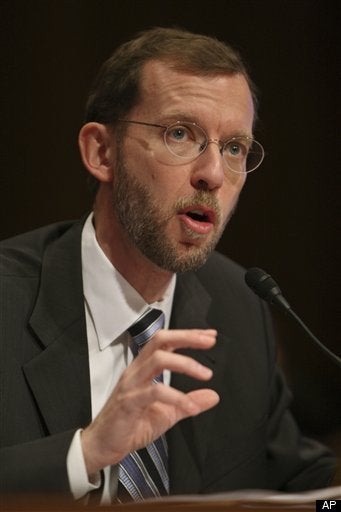
Congressional Budget Office director Douglas Elmendorf threw another wrench into Democratic arguments for cost-effective health care reform, telling an audience on Thursday that there were limited savings - if any - to be gained from one of the chief components of proposed legislation.
Speaking before the National Economists Club, Elmendorf disputed an argument made by White House economic adviser Larry Summers that the administration's funding of preventive services -- such as early screenings and treatments -- would create big-time monetary savings in the long-term.
"Some preventive medicine is cost-saving as well as health improving," Elmendorf said, when asked to respond to Summers' point. "A much larger share is health improving but cost increasing. And there is some share that is just terrible because it makes health worse and costs money."
"Not everything that sounds good for health is good for the budget," he added. "[A] general increase in preventive medicine may or may not have the sorts of favorable budget effects that people expect. That surprises many people. But the very important [point] here is that for somebody who ultimately gets the disease, it is cost saving as well as health improving to catch it early. But to catch it early in that person you generally have to deliver the treatment or administer the test to a much larger set of people, most of who will not ultimately get that disease."
Clearly wary of pushing too hard against the administration, Elmendorf prefaced his statement by noting that Summers was his thesis adviser and "a much better economist than I am."
"So I try not to get into arguments with him," he said.
Elmendorf also stressed that there was a moral argument to funding prevention. "It's not like I only care about money," he said. "But when you are doing a budget estimate it is about the money. So what we are saying is not that these things aren't worth doing... but that it is a use of money and not a source of money for other things."
Nevertheless, Elmendorf's remarks aren't likely to win him any favors with his one-time mentor or, for that matter, Democrats in Congress who already have seen the CBO director throw cold water on other aspects of their reform proposals.
Summers had been critical of the CBO for refusing to "score" savings that could be produced by prevention. In a speech before the Peterson Institute in mid-July, he argued that the congressional auditors were failing to account for the millions that could be saved by the administration's decision to fund wellness initiatives and health information technology programs in the stimulus package.
Such an argument seemed to bolster the administration's claim that the price tag being applied by the CBO to Democratic-proposed health care legislation in the House and Senate was largely inflated. But skeptics of prevention's cost-effectiveness began airing their argument soon thereafter. In a letter to Rep. Nathan Deal, (R-GA) on August 8, Elmendorf wrote that some preventive techniques could actually cost taxpayers more money than they saved.
"Although different types of preventive services have different effects on spending, the evidence suggests that for most preventive services, expanded utilization leads to higher, not lower, medical spending overall," the letter read.
In reality, the debate over prevention -- and whether investments in these services could save the health care system money -- is a far more detailed and complex issue. While a host of health care analysts have concurred with Elmendorf's broad conclusions, others have argued that it is far too simplistic. For starters, there is a major difference between paying for screenings for various illnesses and using that money to encourage lifestyle changes that help prevent those illnesses from occurring in the first place.
A 2008 report from Trust for America's Health found that investing $10 per person per year in proven programs that promote physical activity, better nutrition, and smoking cessation could save more than $16 billion annually within five years -- for a return of $5.60 for every $1 spent. Multiple studies have shown that more than half the cases of type-2 diabetes could be avoided with simple lifestyle changes.
More relevant to the current political context is the fact that Senate Democrats have written health care legislation in a way that makes Elmendorf's concerns largely moot. The bill passed by the Senate Health, Education, Labor and Pensions (HELP) Committee differentiates between preventive services that are proven to work and those that don't with funding directed to the former and not the latter.
